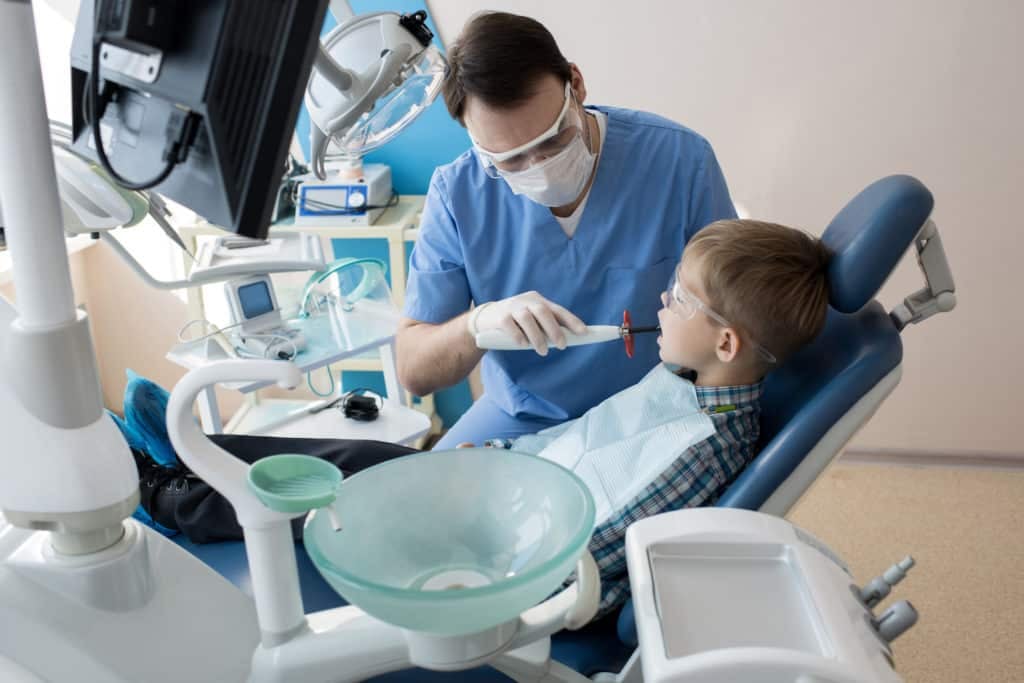Going to the dentist is some people’s worst nightmare. If you have dental anxiety and always dread your regular cleanings, learning that you need a root canal or a cavity filled can send you into a panic.
Thankfully, there’s an alternative option for painless, needle-free dental care: laser dentistry. Laser dentistry is growing in popularity for all kinds of patients. As you start to learn more about laser dentistry and consider if it’s right for you, you’ll probably wonder how much it costs.
Let’s take a closer look at the average laser dentistry cost, as well as insurance coverage, benefits, and more.
In this post, you’ll also read about laser teeth cleaning side effects and whether laser dentistry covered by insurance.
Average Cost of Laser Dental Cleaning
Laser treatments are great for many common dental procedures. In most cases, the out-of-pocket price of dental treatments will increase if lasers are used.
The out-of-pocket cost for a laser dentistry procedure can usually range from $200 to $400. However, if you live in a high-cost-of-living location or need a more involved procedure, the out-of-pocket price can increase to $500–$1200.
Ultimately, the price of laser treatment ranges greatly based on your location, procedure, and insurance coverage.
Laser Gum Surgery Cost with Insurance

Speaking of insurance coverage, most people are curious to know if dental lasers are covered by insurance or if they fall under the “cosmetic procedures” category.
There’s good news: Laser dentistry is covered by dental insurance.
This works because dental insurance covers specific dental procedures, regardless of how the procedure is performed. In short, insurance covers the procedure, not the technique.
So, it’s not a matter of whether or not your dental insurance covers laser dentistry, but more of a matter of if your plan covers the procedure you need or not.
For instance, since laser teeth whitening is a cosmetic procedure, your insurance probably won’t cover it. However, if you get a cavity filled with a laser, that procedure likely would be covered by insurance.
You have many options when it comes to dental insurance. If your employer doesn’t provide a plan for you, you can choose from the following insurance providers:
- Delta Dental (the most popular)
- Blue Cross Blue Shield
- Aetna
- Regence
- BCBS
- Humana
- Metlife
- Premera
- United Health Care
- And more
You might not have to worry about the out-of-pocket expenses listed in the first section because laser dentistry is insurance-covered. Depending on your specific insurance policy and the dental procedure you need, you may only need to pay a small amount (or none at all!).
Common Laser Dental Procedures
Laser dentistry can be used in many different procedures. Procedures are broken down based on soft tissue or hard tissue.

Soft Tissue Procedures
Soft tissue procedures occur in the more “gummy” parts of your mouth. Some procedures that can be completed with a laser include:
- Gingivectomy: A gingivectomy is a cosmetic procedure that is also referred to as gum contouring or reshaping. It helps reshape the gum line by removing gum tissue.
- Gummy smile treatment: A “gummy smile” is when someone has extra tissue surrounding their teeth. Your dentist can use a laser to remove gum tissue and correct the appearance of the smile.
- Gum disease treatment: Preventative laser dentistry can help you avoid the need for gum surgery later on. Lasers can sterilize deep periodontal pockets to eliminate bacteria that can cause gum disease. Lasers can also remove gum inflammation associated with gingivitis and periodontitis.
- Dental crown lengthening: You may require crown lengthening before getting a dental crown or implant. This procedure reshapes the underlying bone and gum tissue and exposes healthy tooth structure.
- Removal of soft tissue folds: Soft tissue folds can result from poorly-fitting dentures. Lasers provide a less painful option for removing these folds without needing stitches.
- Frenulum treatment: Laser frenectomy can remove gaps between the teeth and fix gum recession.
Hard Tissue Procedures
Lasers can also be used in hard tissue procedures, such as:
- Root canals: Laser root canal therapy uses the laser to access the root canal, remove the infected tissue, clean and shape the canal, and fill it.
- Tooth decay (cavity) treatment: Dental lasers can remove decay-causing bacteria and small cavities in teeth without needing a traditional drill. (Lasers cannot be used for filling cavities that exist in between teeth or filling large cavities.)
- Hypersensitivity treatment: Cavities and thin enamel can cause tooth sensitivity. Lasers can treat the sensitivity by sealing tubules on your tooth’s root.
Other Laser-Friendly Procedures
Those lists don’t encompass all of the amazing things dental lasers can do! Lasers can also be used in other treatments, such as:
- Canker sore pain relief
- Reducing jaw pain from TMJ (temporomandibular joint dysfunction)
- Regenerating damaged nerves, blood vessels, and scars
- Removing benign tumors in the mouth
- Removing extra throat tissue that causes obstructive sleep apnea
- Teeth whitening
- Exposing wisdom teeth before removal

